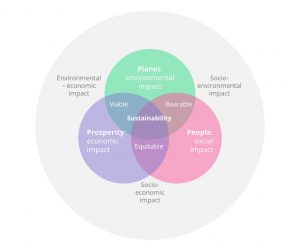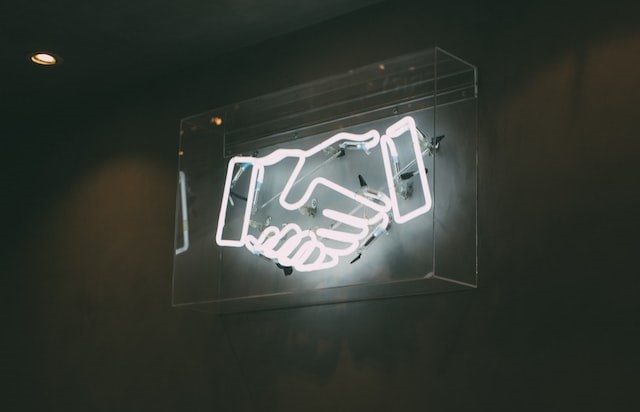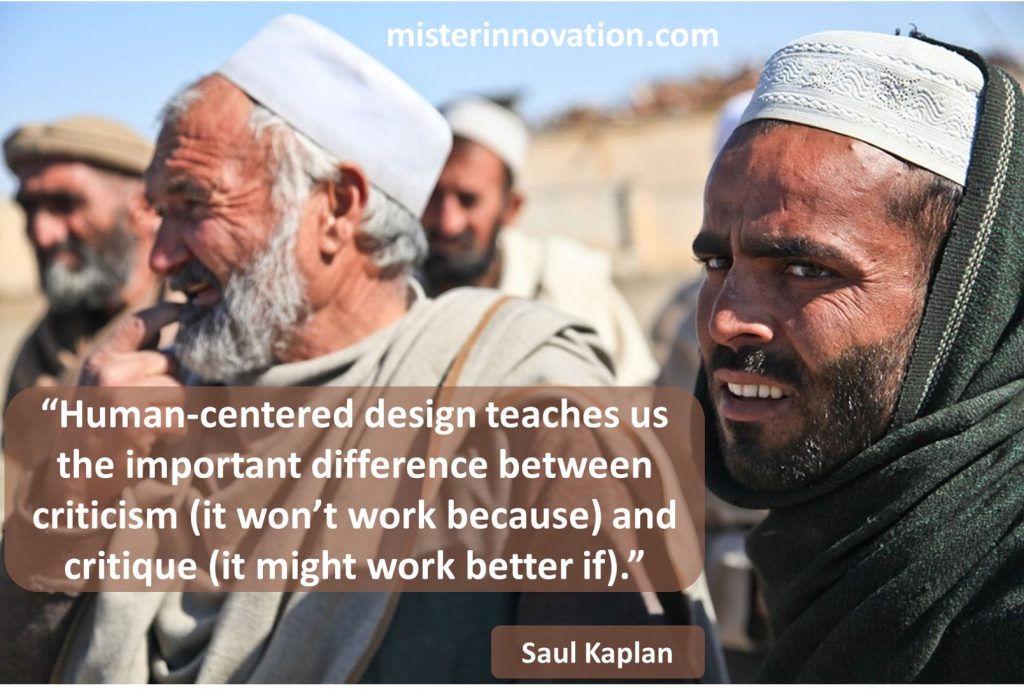
GUEST POST from Dainora Jociute
Money, money, money. It wasn’t so long ago that it was always sunny in the rich man’s world. But today, things just aren’t that easy, and talking about money isn’t enough.
Businesses cannot thrive and survive in a competitive environment with only one bottom line – profit.
United Nations Global Compact report points out that such issues as poverty, an uneducated workforce, and resource scarcity will, and already is, causing issues for business growth. In addition, both investors and potential talents are looking deeper than just the company’s financial success before they commit. So, next to Profit, business’s effect on People and the Planet are just as crucial measurement indicators.
“Poverty, conflict, an uneducated workforce, and resource scarcity for example, are also strategic issues for business success and viability.”
– UN Global Compact
And what do you get once you combine all three? Planet, People, and Profit are often referred to as the three pillars of sustainability. However, for a business to define sustainability, to have clear and reachable goals, and in return to have a fitting strategy to reach those goals can be challenging.
This is where the need and benefits of the triple bottom line framework become most evident.
What is the Triple Bottom Line Framework?
The term triple bottom line (TBL) was coined by John Elkington, corporate environmentalist, and author back in 1994. It isn’t exactly a new concept and we had plenty of time to see it being tried on by different companies like Patagonia, Unilever, Novo Nordisk and so many more. It is evident that the triple bottom line approach works.
So, what exactly is TBL?
Many like to argue that it is just another accounting tool. Yet in Elkington’s own words, it is a sustainability framework that examines an organization’s social, environmental, and economic impact. It measures a business’s environmental efforts (“planet account”), social well-being (“people account”), and a fair economy. It can be implemented by a business, a non-profit organization, or a governmental institution. It is flexible and adaptable.
Decades before the triple bottom line, the dominant belief was that the only responsibility a business has is to generate profit. It was set in place by economist Milton Friedman and his shareholder theory. With TBL, Elkington challenged the status quo by proposing accountability to all stakeholders and not just shareholders.
In addition to helping with planning sustainable growth, the triple bottom line can act as a reporting tool, thus, it focuses on long-term results and not just one-off campaigns to gain some publicity – can an organization sustain a just economy, environmental resources, and human capital?
Once we shift our attention from quarterly reports to a span of multiple years,
sustainability is no longer just a “to-do” list, but an opportunity that will rejuvenate business in an economy that does not exploit natural resources and social systems.

The Three Pillars of Sustainability
The triple bottom line goes hand in hand with the 1987’s Brundtland Report and the three key areas of development established by it: environmental conservation (Planet), economic development (Profit), and social sustainability (People).
Yet the definition of sustainability is a little bit more complex than that.
It is natural, that once you think of sustainability, your mind might wander to emissions, deforestation, climate change, and other related issues. For the longest, environmental changes have been the most reported and the most talked about topic. And for a good reason. The environmental pillar or Planet is considered to be the most important component of sustainability as it contains the social and economic systems within it.
But just like there wouldn’t be people without a planet, there wouldn’t be a business without people, and there wouldn’t be prosperity without business. All three areas are tightly interconnected and initiatives to address one often overlap with the other area, and naturally, when everything is so tightly knit, trade-offs are inevitable.
Sometimes decisions must be made to accommodate people at the cost of the environment OR decisions must be made to solve one environmental issue at the cost of another. A good example here would be an effort to reduce the consumption of single-use plastic bags by offering paper bags instead. Paper bags are easier to recycle and even if they do end up in a landfill, the lifespan of paper is drastically shorter than plastics. However, paper bag production is resource-heavy, consuming “four times more energy than plastic bags”.
Trade-offs make it impossible to talk about sustainability without considering all the pillars equally. Implementing the triple bottom line helps a business to form a holistic view of it.
Sustainability strives for:
- Viable environmental-economic impact: business is executed with the environment and resources in mind, when possible, looking for green solutions or giving back, i.e., reforestation work.
Trade-off: green business solutions can be intrusive and negatively affect private property (i.e., wind turbines in neighboring lands).
- Bearable socio-environmental impact: education and awareness allow people to make environmentally conscious decisions, curb consumption and develop healthy habits that directly impact the environment.
Trade-off: minimal consumption and complete protection of the land stalls economic growth.
- Equitable socio-economic impact: people have an opportunity to work and earn a fair wage, and business strives to increase the general welfare of the people and increase the standard of living. This generates economic opportunity for both businesses and individuals. Corporate taxes also play a crucial role here – it is thanks to taxes that an organization contributes to supporting various societal programs.
Trade-off: new business ventures can create more jobs but increase consumption of nonrenewable materials.
Planet
Planet bottom line focuses on an organization’s environmental impact, both positive and negative. Sustainable innovation (or on the environmental scale – eco-innovation), helps an organization to place its focus on the environment, by improving its production, manufacturing, marketing, and also all the in-house functions.
Impact on the planet can be created by such efforts as choosing natural and/or locally sourced materials, upcycling waste, using recyclable components, reducing unnecessary travel time, or saving energy usage.
Positive environmental impact can seem grandiose and nearly impossible to achieve. Not every organization is equally equipped to take drastic measures and pursue such efforts as reforestation, ocean clean-up, or full refurbishment of manufacturing facilities. Thus, while many regulations and recommendations exist, there is no one-size-fits-all approach to sustainability. Reporting and measurement really depend on such variables as the organization’s industry, location, size, and financial capabilities.
In addition, pursuing this bottom line can put the business in limbo, forcing it to decide between faster or more sustainable goods delivery; lower-costing or ethically sourced materials, and so on. These and similar initiatives can seem costly and counterproductive to what a business should be doing – generating profit. Yet like with most things in life, sustainability is not just black or white and it would not be a prevailing topic if there wasn’t true profit to be gained.
Benefits of The Planet Bottom Line
Besides the obvious emotional benefits of saving the earth, just feeling good while doing good, and complying with regulations there are practical reasons why you should pursue Planet bottom line:
- Satisfying consumer demand: GreenPrint’s 2022 Business of Sustainability Index indicates that demand for sustainable services and products is growing with 69% of respondents saying that “a product’s environmental friendliness is important to their purchasing decision” and 78% agreeing that they are interested in buying from environmentally friendly businesses.
- New business opportunities: a shift towards net zero is creating demand for new green solutions. A recent report by McKinsey indicates that reaching net zero by 2050 requires “investments amount to $9.2 trillion per year, of which $6.5 trillion annually would go into low-emissions assets and enabling infrastructure”.
- Cost reduction: in another report McKinsey notes that environmentally focused initiatives can “improve operating profits by up to 60%”, by reducing unnecessary waste as well as the usage of water or raw materials, that due to growing scarcity, are becoming more and more expensive.
- Improved brand image: knowing that consumers are seeking environmentally friendly products and services, it makes sense to invest in and report on sustainability initiatives. It improves the brand’s image which can lead to increased sales. In addition, nowadays, stakeholders can easily hold an organization accountable for action or inaction, thanks to the speed at which information spreads on social media. Even the smallest misstep by a brand can be rapidly broadcast to millions, causing damage, and leading to lost revenue.
- Minimizing regulatory risks: Staying within safe lines of regulations keeps your organization from fines and penalties. Plus, it’s typically easier and less expensive to take such measures proactively, than it is to do so when your hand is forced.
- Competitive edge: by excelling at and advocating for an environmental cause, an organization can put pressure on its competitors and use the achievement as a competitive advantage.
Initiatives to Consider
As mentioned earlier, pursuing The Planet bottom line does not necessarily mean making big and drastic changes. Environmentally positive impact-creating initiatives that you can consider are:
- Recycling opportunity in-house and limited use of materials (i.e., unnecessary printing).
- Reducing travel, remote work opportunities, and/or public transportation benefits.
- Partnerships with green businesses and buying locally manufactured goods.
- Optimizing and reducing energy consumption.
- Seasonal company-wide green initiatives (i.e., day to collect trash or volunteer).
- Becoming an ambassador of an environmental cause and advocating for it.
- Creating an option for customers and employees to donate instead of receiving material gifts.
- Workshops and training to educate and bring awareness on environmental issues and how the organization can positively impact it.
- Find innovative ways to be more effective or efficient in your operations by involving employees.
The bigger picture will always be comprised of smaller bits and pieces and while the above-mentioned initiatives might seem small, put together they can make an impact. That’s why giving your employees a voice and engaging the whole organization is so important. While it might sound like a big and complex feat, right tools, such as Viima can simplify the process allowing you to run idea challenges on sustainable innovation and development topics.
Reporting
Now, while environmental initiatives are important on many different levels, from a business point of view, they should contribute to profit generation. Thus, once your Planet bottom line initiatives are in place and running, it is crucial to report on them either on your website, or in your annual business or sustainability report.
The Non-Financial Reporting Directive (NFRD) came into effect back in 2018 requiring public interest companies with more than 500 employees to report on how they are dealing with sustainability matters. In 2024 we will see an additional directive on Corporate Sustainability Reporting which will apply to large companies that meet 2 of the following 3 criteria: more than 250 employees; more than €40 million net turnover; more than €20 million on the statement of financial position.
But reporting should be considered by small organizations too as talking about your achievements beyond the mandatory reporting will positively affect your brand image, it will increase transparency, and improve your reputation.
Reporting and measurement of positive impact can be quite difficult, especially if it is a voluntary initiative and is not based on any regulation-implied requirements. Below is a list of KPIs to consider:
- Information on electricity consumption.
- Information on fossil fuel consumption.
- Information on waste management.
- Change in land use/land cover.
- Reduction in greenhouse gas emission.
- Amount of waste generated and, when relevant – amount recycled.
- Amount of ethically sourced materials.
- Information on volunteering or charitable work done.
- Information on new local, sustainable partnerships.

People
People of the triple bottom line encompasses all the people included in or affected by a business.
It goes far beyond just the small circle of shareholders. This category includes (but is not limited to) employees, suppliers, wholesalers, customers, local or global communities within which the business operates, and future generations. Some people like to emphasize the future generations by separating it into the fourth sphere and adjusting the framework’s name to quadruple the bottom line. Yet in J. Elkington’s views, the future generations are simply an inseparable part of society, and it fits just perfectly in the People category.
There are certain aspects of this bottom line that might be regulated by local or regional governing bodies. For example, local labor law might indicate a specific number of working hours per week, how long lunch breaks your employees are eligible to take or what kind of health insurance the company must provide. However, as with all things sustainability, social responsibility extends beyond the bare minimum – it is a business’ voluntary and proactive way of recognizing its impacts on stakeholders.
The People aspect is an organization’s social impact or social responsibility. And as earlier cited UN Global Compact states, “social responsibility should be a critical part of any business because it affects the quality of a business relationship with stakeholders”.
Benefits of The People Bottom Line
Social initiatives might not be seen as profitable in the short run, but on a bigger scale, doing what is right and doing good positively affects the company’s standing amongst its competitors. For example, such initiatives can positively affect the following:
- Employee retention: Companies that invest in their employees’ satisfaction end up saving resources in the longer run. Time and money spent searching, hiring, and training employees can be invested in different opportunities. In addition, people that want to stick around in a company indicate good organizational health and improve brand image.
- Attraction of top talents: More and more routine work is being automated, and value is starting to be increasingly created by fewer people of higher talent creating systems, processes, and technology (=innovations) that drive value. Thus, attracting these top talents is increasingly important, but more and more of these people are these days motivated by factors such as the purpose and mission of the organization beyond just compensation, career growth, etc. more traditional factors.
- Customer loyalty: Companies willing to walk that extra mile, give to societies or contribute to positive impact will reap the benefits of a better brand image, and in line with their customers’ social values they will naturally have a chance to retain old and attract new customers.
- Raising capital: Socially responsible investing is constantly growing and the opportunity to attract investors depends on the organization’s sustainability achievements, the social aspect and how your organization treats people are always on the list of things to be evaluated.
- Avoiding risk: Strong commitment to social initiatives will eliminate work-disrupting and reputation-damaging risks. Any mistreatment of an employee or other community member can cause a severe backlash that will affect the organization’s profitability. In addition, the business’s focus on social responsibility in return creates supply chain security.
- Expanding the market: If most people can’t afford to buy your services, the size of your market dramatically increases if you are able to a) lower the prices of your products by decreasing costs, and/or b) by helping improve the income of said people. Combining both can be a powerful way to grow the business and create a more positive impact all around you.
- Source for innovation: As mentioned in our earlier article social issues need to be addressed and this in return can create business opportunities – “more than 80% of economic growth comes from innovation and application of new knowledge.” People-centric innovation (social innovation) enables the business to tap into that growth and reap benefits.
Initiatives to Consider
There are a lot of organizations that go far beyond the basic in-house social needs and are willing (and are financially capable) to give back to communities with charity work, donations, education grants, and various volunteering and community engagement initiatives.
However, not every company is capable of running such initiatives. Smaller-scale improvements like supporting your employees in setting up home offices with recycled or new equipment can be a great morale boost. In return, it creates comfort for people to work from home, reducing time spent commuting and/or using cars, leaning toward the Planet bottom line. With sustainability, every small effort counts.
- Paid internships for students.
- Organizing educational projects for externals (i.e., coding academy for students, job searching training).
- Skill training and learning opportunities for employees.
- Internal anti-racist training.
- Employee surveys or feedback to keep everyone in the loop.
- Salary transparency.
- Employee stock plan.
- Volunteering work within the nearest communities.
Reporting
Topics to report on and how your organization’s initiatives affected them can be:
- Demographics of your employees and partners (i.e., working with small or minority-owned businesses).
- Vacation days collected and used to see whether employees are rested and not overworked.
- The average difference between wages and finances needed for minimum living standards in the area.
- Average commuting time.
- Average employee benefits.
- Information on diversity of employees.
- Job safety KPIs (i.e., reported incidents, corrective actions taken).
- The number of new jobs created.
- Hours spent on employee or external communities’ training.
- Information on second-tier suppliers (i.e., where and how your first-tier suppliers are sourcing materials).

Profit
Profit by default seems to be the most analyzed and the best-understood segment of all the three covered in this article. By definition, profit means “money that is earned in trade or business after paying the costs of producing and selling goods and services”.
TBL is not meant to discount profit in any way – rather incorporate it into the other two legs of sustainability: investment in social initiatives or environmental projects relies directly on profit and a company that does not do well financially cannot contribute to the other areas – social and environmental impact.
Profit refers to the influence that the organization is creating on the whole environment within which it operates: ethical means to earn a profit; cooperating with and supporting ethical partners; fair wages and full taxes paid.
Profit as a component of TBL is pretty straightforward, yet there are certain aspects that might be confusing. And it seems to arise from a two-sided view of Profit: the philanthropic take with emphasis to give back to society as a charity, and pure profit to satisfy shareholders.
However, when talking about sustainability and the triple bottom line, these two sides are inseparable. The company can stay in business and drive value for the People and the Planet only if it makes a profit.
The triple bottom line’s Profit is a cycle: a business that makes a profit can then invest in innovation, creating a positive impact on the Planet and the People; can then pay taxes that in return will be used for social good; can then grow to create jobs for People and so on.

Conclusion
The triple bottom line like other sustainability-oriented initiatives can seem quite idealistic in a world still strongly focused on profit.
But as McKinsey report over the past 5 years, investment into sustainable funds has been on a rise and even if current environmental, social, and governance (ESG) frameworks are far from perfect, ESG considerations are becoming more important in companies decision making. In addition, investing in sustainable innovation does result in stronger economies, higher living standards, and more opportunities for individuals.
There are no better words, to sum up this article than John Elkington’s words:
“To truly shift the needle, however, we need a new wave of TBL innovation and deployment. None of these sustainability frameworks will be enough, as long as they lack the suitable pace and scale — the necessary radical intent — needed to stop us all overshooting our planetary boundaries.”
The challenge here is that businesses still must satisfy shareholders and to deliver the value they have to make tradeoffs. There’s no one golden rule on how to satisfy all three areas of TBL equally, it is a continuous, balancing act, and decision-making should be based on long-term goals. But the fact is, that decisions must be made, and it is the best time to go beyond planning and start implementing.
This article was previously published in Viima’s blog.
Image Credits: Unsplash, Viima, Pexels
 Sign up here to get Human-Centered Change & Innovation Weekly delivered to your inbox every week.
Sign up here to get Human-Centered Change & Innovation Weekly delivered to your inbox every week.

![]() Sign up here to get Human-Centered Change & Innovation Weekly delivered to your inbox every week.
Sign up here to get Human-Centered Change & Innovation Weekly delivered to your inbox every week.





